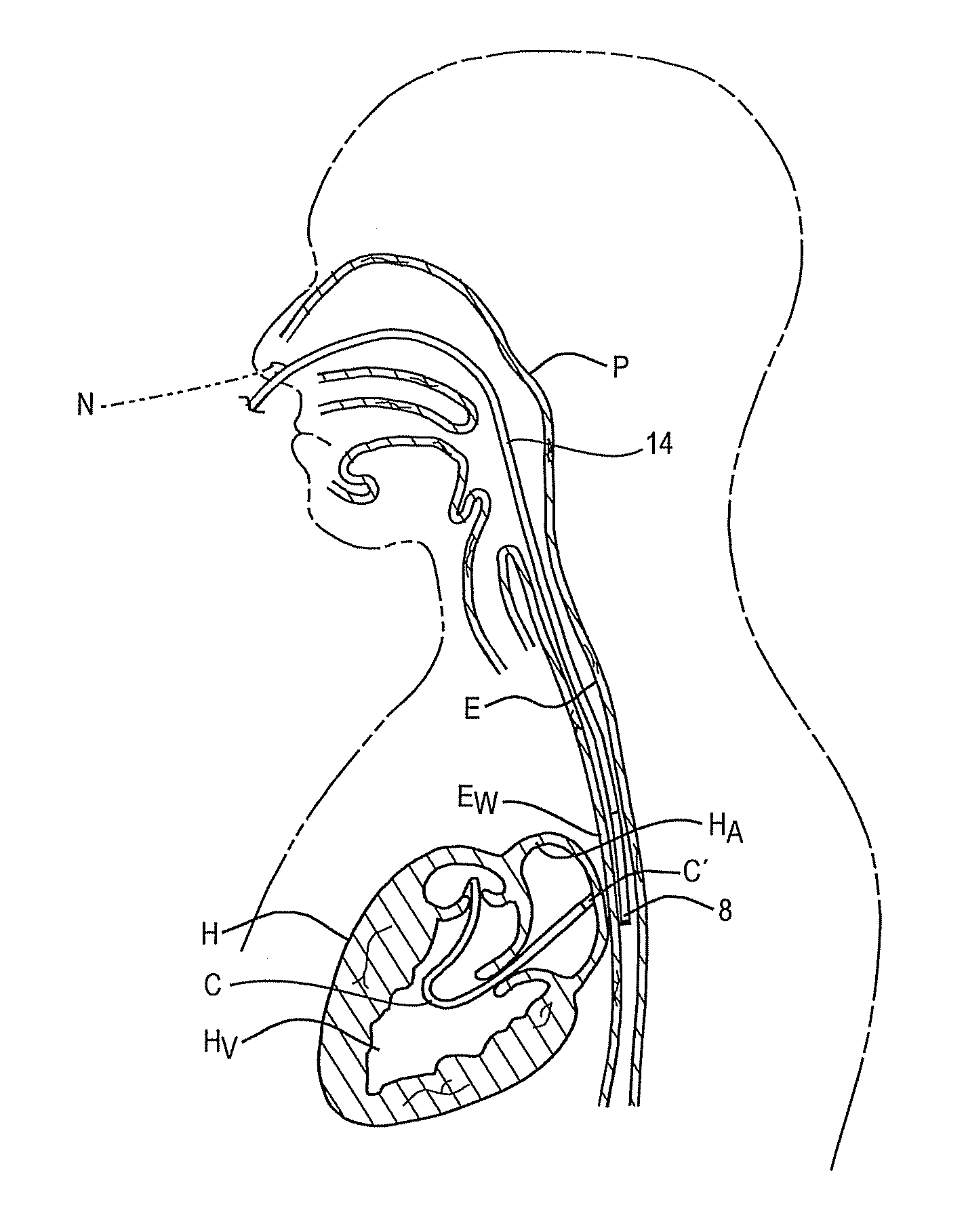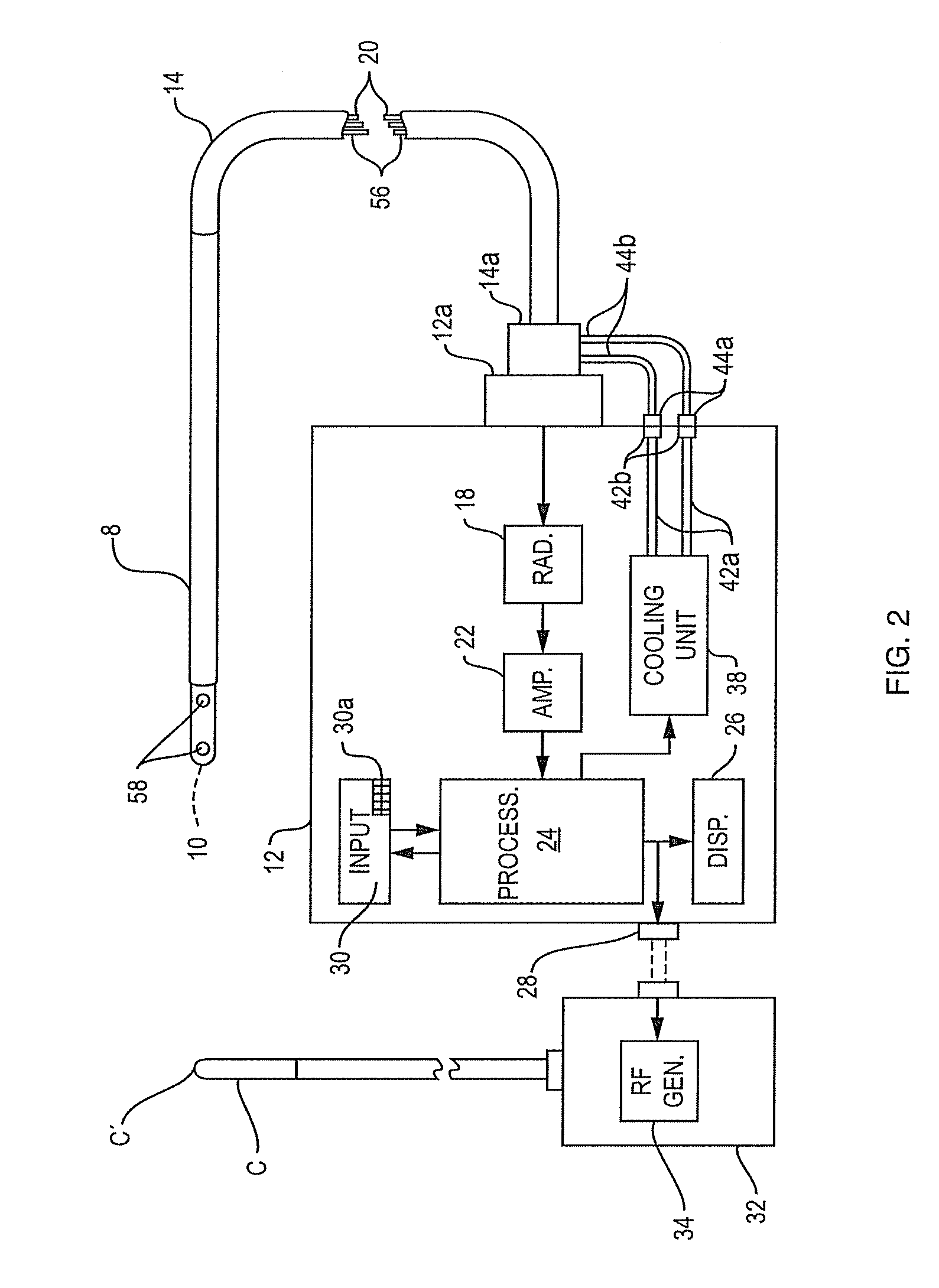Method and apparatus for minimizing thermal trauma to an organ during tissue ablation of a different organ
a tissue ablation and esophagus technology, applied in the field of methods and apparatus for minimizing thermal injury to the esophagus during a cardiac ablation procedure, can solve the problems of intentional, irreversible damage to the heart tissue, esophagus damage, severe consequences, etc., and achieve the effect of accurately measuring the temperature of the esophagus wall
- Summary
- Abstract
- Description
- Claims
- Application Information
AI Technical Summary
Benefits of technology
Problems solved by technology
Method used
Image
Examples
working example
[0047]A test was performed using the temperature probe 8 depicted in FIG. 4 to verify that the temperature at depth in tissue can be recorded while part of the tissue is being cooled. Testing was done with the delivery of microwave power at 2.4 GHz via a catheter C to tissue which was actively cooled by body temperature saline solution running under the tissue to simulate blood flow and the probe 8 was positioned to record the temperature at depth in the tissue. The probe 8 in FIG. 4 is similar to probe 8 in FIG. 3 except that it has a body of low dielectric material above the antenna which causes the antenna to “look” down into the tissue as seen from the longitudinal sectional view of the antenna pattern in FIG. 4, i.e. the antenna is directional. The antenna in probe 8 operates at a frequency of 4 GHz. It should be noted that the antenna pattern in FIG. 4 was obtained with the antenna in the transmit or radiate mode rather than the receive mode because this is the usual custom si...
PUM
 Login to View More
Login to View More Abstract
Description
Claims
Application Information
 Login to View More
Login to View More - R&D
- Intellectual Property
- Life Sciences
- Materials
- Tech Scout
- Unparalleled Data Quality
- Higher Quality Content
- 60% Fewer Hallucinations
Browse by: Latest US Patents, China's latest patents, Technical Efficacy Thesaurus, Application Domain, Technology Topic, Popular Technical Reports.
© 2025 PatSnap. All rights reserved.Legal|Privacy policy|Modern Slavery Act Transparency Statement|Sitemap|About US| Contact US: help@patsnap.com



